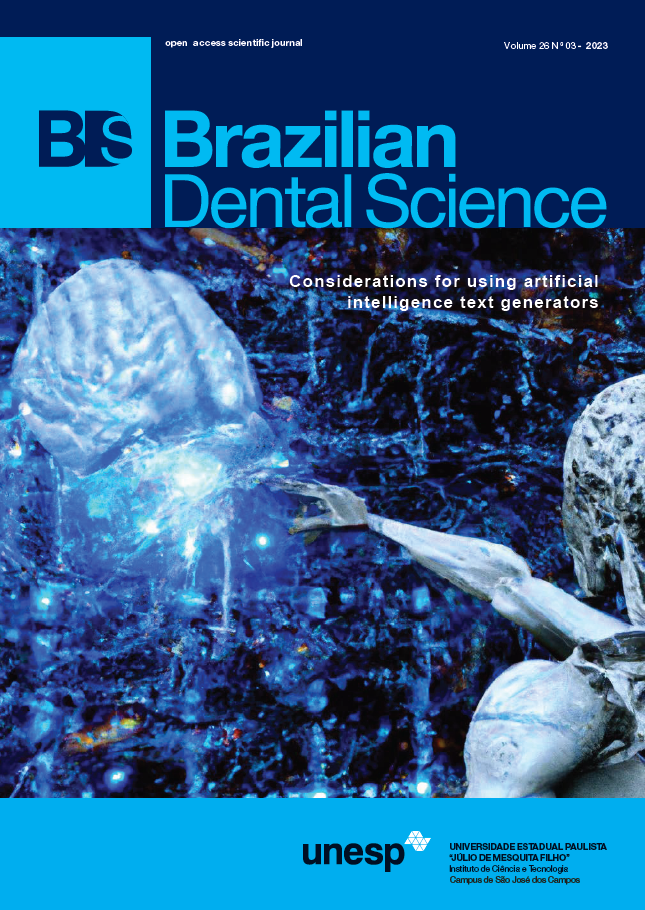Usefulness and satisfaction of a digital learning tool for caries detection using ICDAS
DOI:
https://doi.org/10.4322/bds.2023.e3819Resumo
Objective: this study aimed evaluate the usefulness and satisfaction of a digital learning tool (DLT) using ICDAS (International caries detection and assessment system) created for learning and training visual detection of carious lesions in a non-controlled setting. Material and Methods: the DLT containing 60 pictures of sound and carious surfaces was distributed through social media and professional associations, aiming at both dentists and dental students. Analysis was based on data collected through a personal, professional and satisfaction questionnaire and Google Analytics. Results: a total of 2300 users accessed the DLT and 1517 completed it, filling out the questionnaires. Users required 2.29 sessions to accomplish the DLT in an average time of 15 min and 14 seconds each. The satisfaction questionnaire showed that 84.8% of users found in the DLT exactly what they expected and 91.8% found it useful. Around 88.4% of users found that the DLT helped in discussion of ICDAS with colleagues and 88.9% with superiors; 88.3% found that the DLT provided immediate learning results. The DLT was most useful to dental students (83.7% of users), and overall satisfaction was 86%. Conclusion: users found the DLT useful for learning and training visual detection of carious lesions using ICDAS, and general satisfaction was high.
KEYWORDS
Dental Caries; Distance; Diagnosis; Education; ICDAS.
Downloads
Downloads
Publicado
Como Citar
Edição
Seção
Licença
TRANSFERÊNCIA DE DIREITOS AUTORAIS E DECLARAÇÃO DE RESPONSABILIDADE
Toda a propriedade de direitos autorais do artigo "____________________________________________________________________" é transferido do autor(es) para a CIÊNCIA ODONTOLÓGICA BRASILEIRA, no caso do trabalho ser publicado. O artigo não foi publicado em outro lugar e não foi submetido simultaneamente para publicação em outra revista.
Vimos por meio deste, atestar que trabalho é original e não apresenta dados manipulados, fraude ou plágio. Fizemos contribuição científica significativa para o estudo e estamos cientes dos dados apresentados e de acordo com a versão final do artigo. Assumimos total responsabilidade pelos aspectos éticos do estudo.
Este texto deve ser impresso e assinado por todos os autores. A versão digitalizada deverá ser apresentada como arquivo suplementar durante o processo de submissão.




























